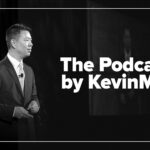In 1995, I stood at the edge of a map most policymakers ignored: Appalachian Ohio. The Surgeon General’s 2002 report, “Closing the Gap: A National Blueprint to Improve the Health of Persons with Mental Retardation,” would later cite our work as a model for rural specialty outreach. But long before that recognition, we were ledgering care into counties where children with developmental disabilities had no clear path to diagnosis, let alone treatment. The Ohio Rural Developmental and Behavioral Clinic Initiative wasn’t just a program; it was a tactical response to a system that left rural families stranded. We didn’t wait for reform. We built it.
The initiative was born from a statewide needs assessment conducted by the Ohio Department of Health. The findings were stark: rural counties had fewer resources, fragmented systems, and families overwhelmed by uncoordinated care. In response, we launched two pilot clinics in underserved counties, each staffed by interdisciplinary teams: developmental for children under six, behavioral for school-age youth. These teams didn’t parachute in. They partnered with local public health nurses who served as liaisons, conducting home visits, gathering records, and ensuring that families remained central to both diagnosis and treatment. We didn’t just evaluate children; we evaluated the system. In the program’s first two years, we reviewed 120 clinical charts and interviewed families. The results were telling: 98 percent of families who pursued services after evaluation successfully obtained them. The chief barrier wasn’t bureaucracy; it was family hesitation, often rooted in stigma or fatigue. But when families engaged, the system worked. Diagnoses were clarified. Services were accessed. Hope was restored.
Over time, the initiative expanded to 37 clinics across eight counties, serving children from 18 additional counties. We evolved from direct service delivery to a sustainable training model, equipping local providers to carry the work forward. Funding came from Title V, Healthy Tomorrows, and LEND grants, federal investments that recognized the value of community-integrated care. Still, the greatest challenge wasn’t clinical. It was cultural. Sustaining a seamless system of care in rural America requires more than funding. It demands shared vision, interagency collaboration, and a willingness to integrate training, consultation, and research into everyday practice. We didn’t always succeed. But we never stopped trying.
Years later, I found myself in Phoenix (not metaphorically, but literally) presenting this initiative at a national conference. The desert air was dry, but the room was electric. Colleagues from across the country leaned in, not because the model was perfect, but because it was real. It had survived the friction of rural logistics, the politics of funding, and the fatigue of frontline care. In Phoenix, the initiative was no longer just an Ohio story. It was a national blueprint. And then Phoenix became more than a conference stop. It became my next frontier.
Determined to streamline evaluations, I developed a “one-stop” clinic for assessing autism and other developmental concerns, a stark contrast to the drawn-out, bureaucratic mess Arizona had normalized. I sent all questionnaires and history forms before appointments, reviewed the data in advance, and completed the evaluation in a single visit. Parents left with the same one-page summary format I had perfected in rural clinics, along with a full report within the week. But bureaucracy remained a barrier. In 2003, Arizona law prohibited pediatricians from diagnosing autism. My reports bypassed that restriction, landing directly on the desk of the head of the Arizona Division of Developmental Disabilities, a psychiatrist. He liked my reports, but suggested a formatting adjustment: transforming my DSM-IV criteria narrative into a table. It was a brilliant suggestion; one I immediately adopted.
During my tenure, the Developmental Disabilities Monitoring (ADDM) Network at the University of Arizona reviewed my reports for inclusion in the CDC’s database, helping estimate ASD prevalence nationwide. The number of diagnosed Hispanic children surged. Despite my limited Spanish, I leaned on our medical assistants for translation. Most of my patients were on Medicaid, reinforcing my commitment to closing health disparities. The numbers spoke for themselves. In 2002, ASD prevalence among Hispanic children stood at 3.4 per 1,000. By 2004: 7.4. In 2006: 8.3. By 2010: 10.6. And by 2022: 32.2 per 1,000, nearly ten times the rate recorded in 2002. Everyone knew I was behind the surge in ASD diagnoses, but only the parents cared.
My impact was real, yet in the grand scheme of policy, finance, and institutional neglect, I remained just a dust speck in the eyes of those in power. Yet among the families I served (particularly those of Hispanic heritage) my presence was anything but insignificant. I created questionnaires and educational materials in Spanish, treated them with the respect others denied them, and ensured their children received evidence-based care. One medical assistant summed it up best, relaying the words of a grateful parent:
“Él es el único que se preocupa por nuestra cultura y nos trata como iguales.
Es un pediatra excepcional y un elemento respetado para nuestra comunidad.”
He is the only one who cares for our culture and treats us as equals. He is a rare pediatrician and a respected asset to our community.
Urban health disparities weren’t just statistics. They were children. And I made sure they were seen, not only by God, but by the CDC. I am a Christian. I saw these children not as data points or Medicaid burdens, but as fellow children of God. While others (some colleagues included) viewed Hispanic families only through the lens of labor or language barriers, I saw their children as worthy of the same dignity, the same urgency, and the same care. I listened to the words of Christ: “Let the little children come to me.” And I made sure they were not just welcomed, but counted. Appalachia was never a detour. It was the frontline. Phoenix was the echo. And for a time, in both places, we held the line.
Ronald L. Lindsay is a retired developmental-behavioral pediatrician whose career spanned military service, academic leadership, and public health reform. His professional trajectory, detailed on LinkedIn, reflects a lifelong commitment to advancing neurodevelopmental science and equitable systems of care.
Dr. Lindsay’s research has appeared in leading journals, including The New England Journal of Medicine, The American Journal of Psychiatry, Archives of General Psychiatry, The Journal of Child and Adolescent Psychopharmacology, and Clinical Pediatrics. His NIH-funded work with the Research Units on Pediatric Psychopharmacology (RUPP) Network helped define evidence-based approaches to autism and related developmental disorders.
As medical director of the Nisonger Center at The Ohio State University, he led the Leadership Education in Neurodevelopmental and Related Disabilities (LEND) Program, training future leaders in interdisciplinary care. His Ohio Rural DBP Clinic Initiative earned national recognition for expanding access in underserved counties, and at Madigan Army Medical Center, he founded Joint Base Lewis-McChord (JBLM) CARES, a $10 million autism resource center for military families.
Dr. Lindsay’s scholarship, profiled on ResearchGate and Doximity, extends across seventeen peer-reviewed articles, eleven book chapters, and forty-five invited lectures, as well as contributions to major academic publishers such as Oxford University Press and McGraw-Hill. His memoir-in-progress, The Quiet Architect, threads testimony, resistance, and civic duty into a reckoning with systems retreat.




















![Alzheimer's link with insulin resistance [PODCAST]](https://kevinmd.com/wp-content/uploads/Design-3-1-190x100.jpg)


